Experts from IDEO, Adobe, SVA, HOK, Designer Fund, and more share book recommendations for designers who want to expand their horizons in 2021 and beyond.
Designers in 2021 face some of the biggest challenges of their careers as they help rebuild a society torn asunder by COVID-19, economic inequality, racial injustice, and climate change. Looking for inspiration on Instagram or in a Taschen doorstopper won’t be enough. So we asked top designers and thought leaders to recommend books that designers—and really anyone who wants to be an enlightened citizen of the world—should read to expand their thinking beyond the traditional design text. Their selections include memoirs, an in-depth look at the infographics of W.E.B. Du Bois, and a 40-year-old U.S. history book that’s more relevant than ever.
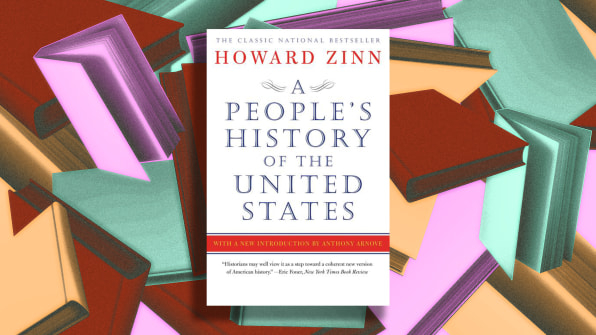
A People’s History of the United States by Howard Zinn
It’s always a good time to read, or reread, A People’s History of the United States by Howard Zinn, but it may be a more salient text today than ever before. The book shows how the American history we learned in school is often an obfuscation of real events, wherein large groups of Americans have been repeatedly exploited by privileged interests. The relevance to design is perhaps not direct, but in 2021 I can’t think of anything more important for a designer to prioritize than understanding what it means to be a citizen of this country. —Khoi Vinh, senior director of product design, Adobe
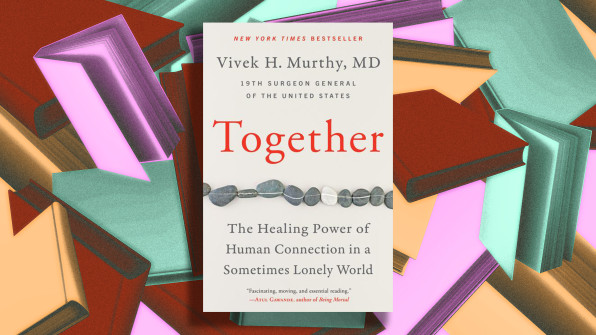
Together by Vivek Murthy
A book that inspired me recently was Together: The Healing Power of Human Connection in a Sometimes Lonely World, written by Dr. Vivek Murthy, the 19th Surgeon General of the United States (and soon to be 21st!). When Murthy first stepped into the role in 2015, he embarked on a national listening tour so that firsthand stories from people all over the country would directly inform his agenda as “America’s Doctor.” What he found—in addition to rising rates of diabetes and heart disease, and a spiraling opioid crisis—was a common pattern that seemed to be a root cause of our ailments: loneliness.
Dr. Murthy points to the science that we all know in our experience: that we humans are built for connection—to each other, to our communities, and to ourselves. We need it to survive. Without it, not only does our health suffer, but so does our society. Especially now, after nearly a year of quarantining, sheltering in place, and locking down, that sense of isolation shadows everything we experience—in our schools, hospitals, restaurants, media platforms, workplaces, communities.
This book offers a great example of how leaders can take on large-scale, systemic questions in a human-centered way, provides inspiration for designers looking to create experiences that bring people closer together, and includes helpful guidance for anyone looking to feel a little less lonely and more connected. —Sandy Speicher, CEO, IDEO

W.E.B. Du Bois’s Data Portraits: Visualizing Black America by Whitney Battle-Baptiste and Britt Rusert
While W.E.B. Du Bois’s Data Portraits: Visualizing Black America, edited by Whitney Battle-Baptiste and Britt Rusert, is a newer read for me, I think it’s been foundational for how I contextualize the importance of design and information systems in the pursuit of moving culture forward and dismantling socioeconomic disparities. I never learned about this groundbreaking work and its relevance to modern design thinking while in design school. For any young designer or graphic artist coming up, it’s an inspiring account of how a blend of science and art can call attention to “invisible struggles.” There is brilliance in truth-telling and sharing stories of real people in design which help us create a deeper sense of empathy for the humanity of others. —Quinnton Harris, group creative director, Publicis Sapient
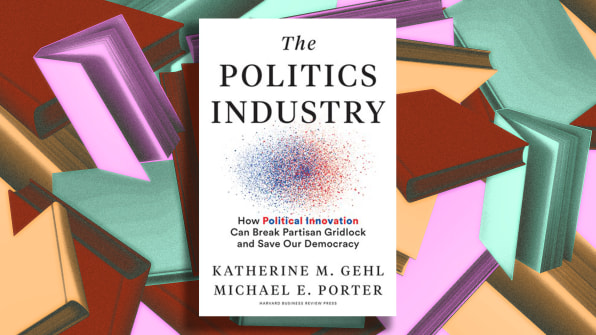
The Politics Industry by Katherine Gehl and Michael Porter
American politics are gridlocked and dysfunctional. Our biggest problems are not getting solved; Republicans blame Democrats, and Democrats blame Republicans. What if, instead of seeing this as a political problem, we looked at it as a design problem? What if we took a step back and asked, How can our elections work better? And how can we make laws that actually solve our problems? These are the questions that Katherine Gehl and Harvard Business School professor Michael Porter seek to answer in their book, The Politics Industry: How Political Innovation Can Break Partisan Gridlock and Save Our Democracy.
The book outlines how political stagnation in the U.S. is not the result of a single cause, but a systems problem. They state this: “Too many people—including many pundits, political scientists, and politicians themselves—are laboring under a misimpression that our political problems are inevitable, or the result of a weakening of the parties, or due to the parties’ ideological incoherence, or because of an increasingly polarized American public. Those who focus on these reasons are looking in the wrong places. The result is that despite all the commentary and attention on politics in recent years, there is still no accepted strategy to reform the system and things keep getting worse.”
This brilliant book helps deconstruct how this has happened, and ultimately, Porter and Gehl put forth a strategy for reinvigorating our democracy. —Debbie Millman, founder and host, Design Matters
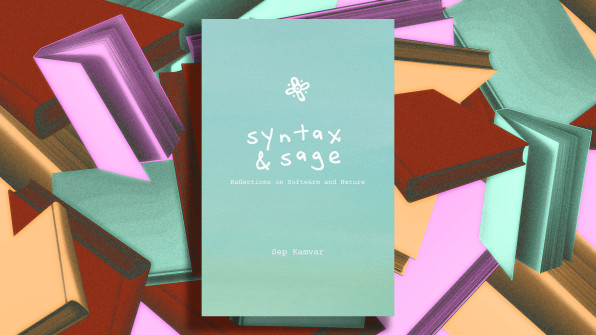
Syntax & Sage by Sep Kamvar
I recommend a relatively unknown book called Syntax & Sage: Reflections on Software and Nature by Sep Kamvar, an accomplished technologist and former associate professor at MIT. The recent U.S. election and rapid digitization of our lives due to COVID-19 has woken people up to the consequences of software. If we’re going to survive the challenges of climate chaos, the next frontier for many designers is to create things that evoke the better parts of our human nature while being in harmony with the environment.
Syntax & Sage is a book you’ll actually finish reading, with short but deep lessons from the last couple of decades. It’s filled with wisdom in the form of reflections, vignettes, and aphorisms that guide us toward a more compassionate and conscious way of building technology. —Enrique Allen, cofounder, Designer Fund

My Own Words by Ruth Bader Ginsburg, The Color of Law by Richard Rothstein, Health Design Thinking by Bon Ku and Ellen Lupton
Design in 2021 will face two important challenges: tackling issues of equity and sending a clear message through a lot of noise. Ruth Bader Ginsburg’s own words tackle both through a chronological evolution of her work. In a year when many feel discouraged, RBG’s My Own Words is not just inspiring evidence of a pioneer who used the law to level the playing field for so many, but also full of practical design lessons on clarity. One poignant line: “I prefer and continue to aim for opinions that both get it right and keep it tight, without undue digressions or decorations.”
2021 will also be an important year for every industry to rethink what role they may have in worsening or improving racial equity. The Color of Law: A Forgotten History of How Our Government Segregated America by Richard Rothstein is an incredible read that explains how decades of discriminatory housing policies in the U.S. led to structural disadvantages creating disparities that persist today. If you want to use design as a force for racial equity, The Color of Law will reveal many of the structural barriers that are primed for a redesign.
Finally, as we turn the corner on COVID-19 and begin to plan for a post-COVID life, health will remain center stage. Healthy airports, healthy schools, healthy homes, healthy offices. If health is not a priority in your design, organization, or mission yet, it will be. Health Design Thinking: Creating Products and Services for Better Health is a highly visual tutorial full of examples across product, space, and process design led by practicing physician Bon Ku, who runs the Jefferson Health Design Lab, and Ellen Lupton, senior curator at Cooper Hewitt, Smithsonian Design Museum. If you need a jump-start to close the gap on your work in design with health, start here. —Andrew Ibrahim, surgeon and chief medical officer, HOK

A Promised Land by Barack Obama
Barack Obama’s new book, A Promised Land, is about leadership against all odds. There was this suggestion in some quarters of American society that a Black kid from Hawaii should not be president, yet Obama won hearts and minds going against the norm. And things didn’t get any easier for him after he was elected. We were coming out of the Great Recession, we needed to fix healthcare, veteran services were a disaster, and all the while Obama’s political opponents were rooting for him to fail.
Obama campaigned on change, and once he brought change, people got scared to death! It’s hard to enact change, but that’s what you have to do in the design process, too. You have these barriers and “Towers of No” thrown up in front of you, but designers overcome them with their innate sense of how stuff works and how to make it better. At the end of the day, they understand when things aren’t working, and then they have to get into the weeds to fix them.
Obama understood the “Designer’s Dilemma,” which is that there will always be struggles, but you have to keep figuring out how to break through them. This led to him doing some incredible things like bringing in top designers and data scientists to create the U.S. Digital Service, an entirely new civic infrastructure and UX framework for the government to better serve the American people. Obama had his difficulties as all leaders do, but designers can learn from his moral compass. Whenever he felt stuck, he leaned into his empathy and the strength of his convictions. —Doreen Lorenzo, assistant dean, School of Design and Creative Technologies, the University of Texas at Austin
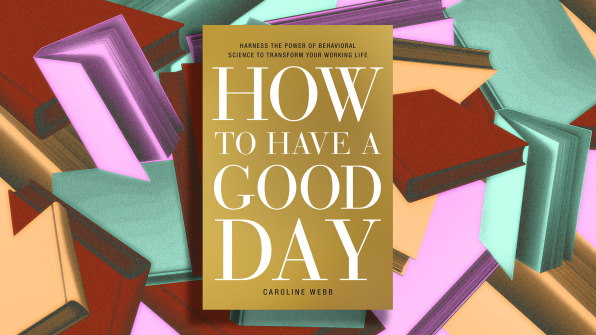
How to Have a Good Day by Caroline Webb
As I sat down to reflect on 2020 and prepare for 2021, I found it difficult to put everything into perspective. In a time of such unprecedented change, challenges, and uncertainty, I was looking for a simple yet concrete reference that would enable me to be productive, resilient, and a supportive leader at work in the coming year. I found it in How to Have a Good Day: Harness the Power of Behavioral Science to Transform Your Working Life.
Author Caroline Webb provides easy-to-use frameworks spanning productivity and focus to building rapport, facing conflict, and reflecting on both our successes and defeats. Accompanying each section are underlying findings from brain research and the behavioral economic principles that guide her frameworks and recommendations. On its surface, it’s an easy read. However, each section is packed with advice I’m sure to reference throughout the year. —Kate Aronowitz, lead operations partner, GV

The Happiness Hypothesis by Jonathan Haidt
The book that I keep going back to is The Happiness Hypothesis: Finding Modern Truth in Ancient Wisdom by Jonathan Haidt. According to Haidt, happiness is not something you can find or buy. You can only get the conditions for it right and then wait. Today when there’s so much to be unhappy about, it’s good to be reminded of what makes us happy. What are the conditions of happiness? How can I get them in my own life in relation to my family and friends, and my work as an industrial designer, and in relation to something bigger, often in the presence of great art?
Haidt writes, “It is worth striving to get the right relationships between yourself and others, between yourself and your work, and between yourself and something larger than yourself. If you get these relationships right, a sense of purpose and meaning will emerge.” —Ayse Birsel, author, Design the Life You Love
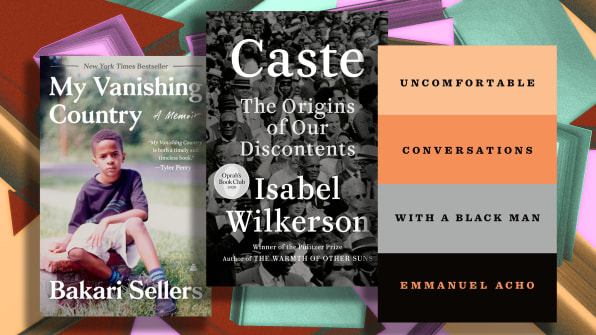
My Vanishing Country by Bakari Sellers, Caste by Isabel Wilkerson, Uncomfortable Conversations With a Black Man by Emmanuel Acho
I spent 2020 devouring audiobooks on long drives and occasional, though not frequent enough, stress walks. Listen to My Vanishing Country by Bakari Sellers and Caste: The Origins of Our Discontents by Isabel Wilderson to understand racial hierarchies in this country. These books, as well as Emmanuel Acho’s Uncomfortable Conversations With a Black Man, help reframe ideas around race in this disturbing time. These explorations push me to consider new ways to address inclusivity in both my teaching and design practices and have provided much to reflect on in my personal life, as well. Am I doing enough on any front to make things better for the next generation? No—but these books inspire me to keep trying. —Gail Anderson, chair of the BFA advertising and design departments, New York City’s School of Visual Arts
…
This article first appeared in www.fastcompany.com
Seeking to build and grow your brand using the force of consumer insight, strategic foresight, creative disruption and technology prowess? Talk to us at +971 50 6254340 or mail: engage@groupisd.com or visit www.groupisd.com/story



